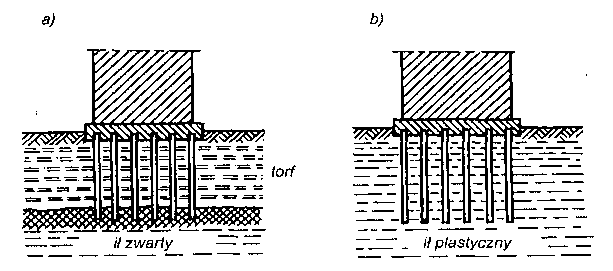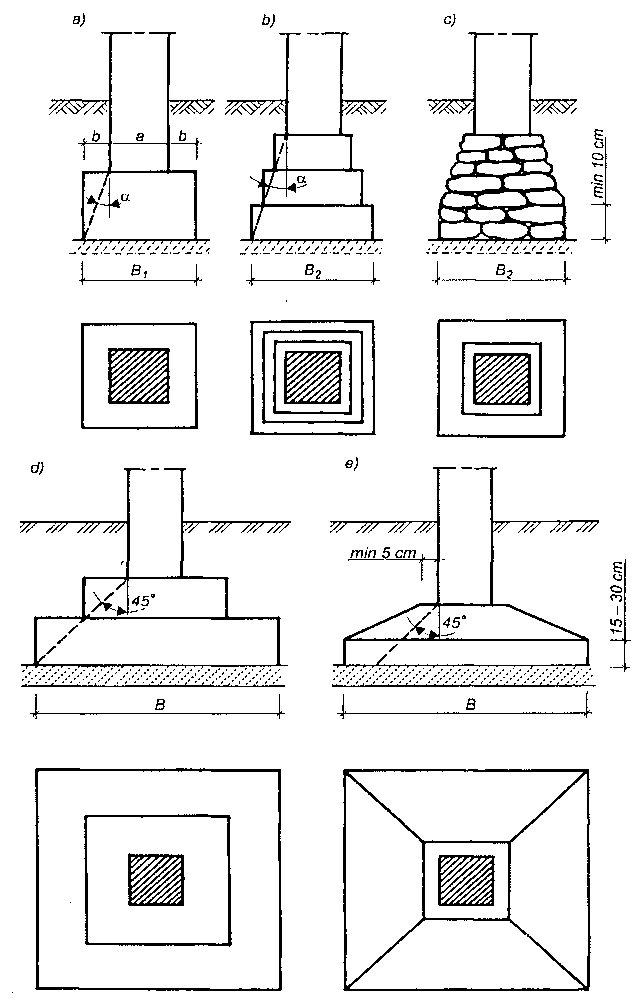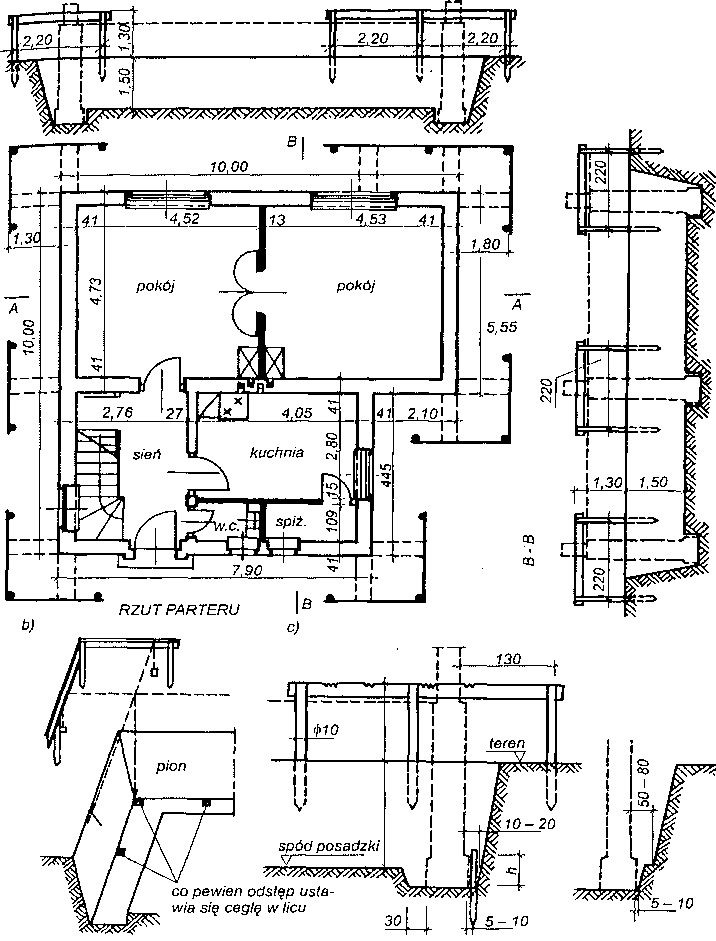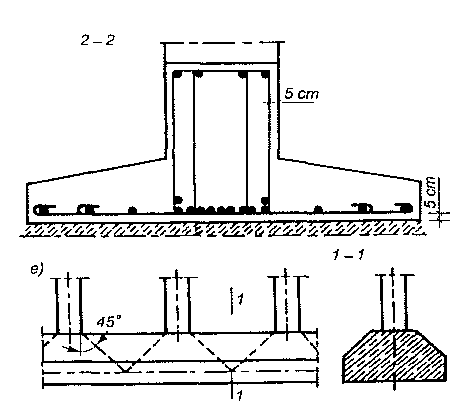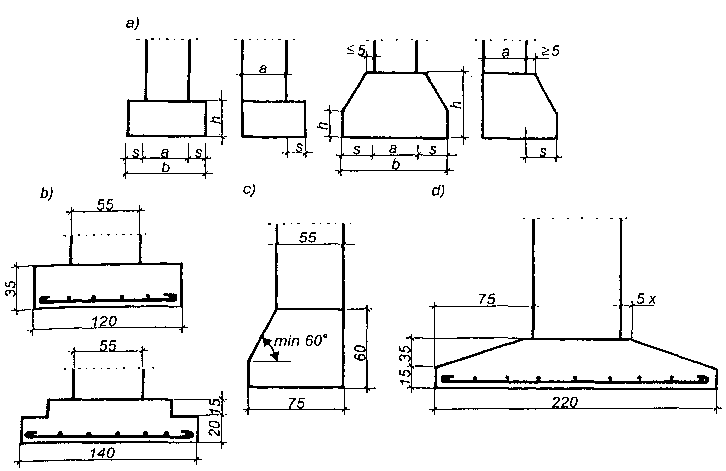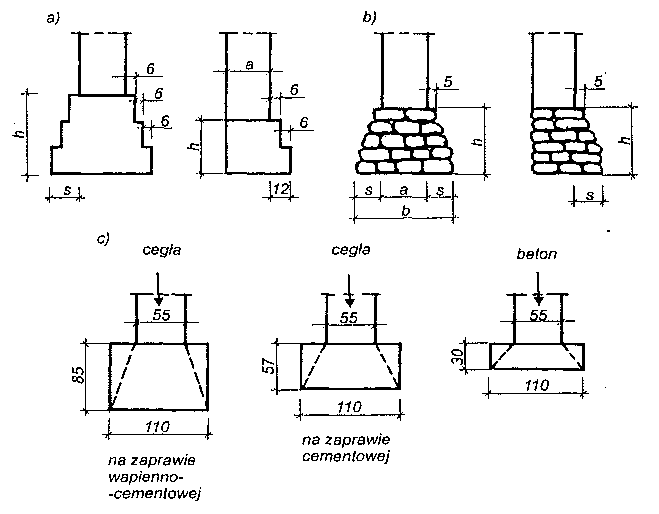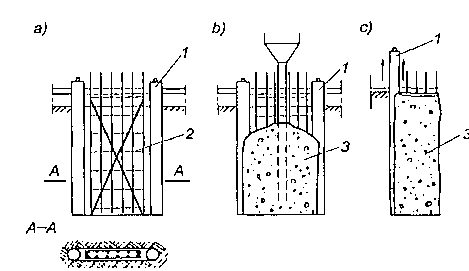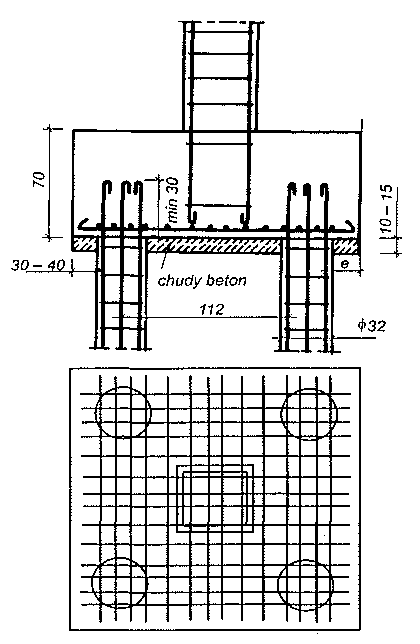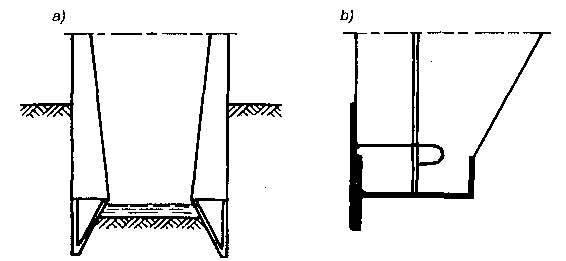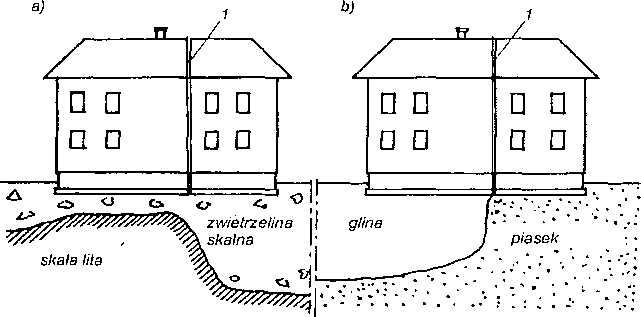Podział fundamentów
W zależności od głębokości posadowienia, sposobu wykonania oraz pracy konstrukcji fundamentu rozróżnia się fundamenty płytkie i głębokie.
Fundamenty płytkie spoczywają bezpośrednio na gruncie i są to: ławy fundamentowe, stopy, ruszty, płyty i skrzynie. Ten sposób posadowienia stosuje się wtedy, gdy grunt nośny zalega na małej głębokości. W przypadku zalegania gruntu nośnego na dużych głębokościach, tj. ponad 5,0-7,0 m poniżej fundamentu (posadzki piwnicy), stosuje się fundamenty posadowione na palach, słupach i studniach.
W zależności od użytego materiału rozróżnia się fundamenty z kamienia, cegły, betonu i żelbetu.
Głębokość posadowienia
Głębokość posadowienia budynku zależy od sposobu wykorzystania części podziemnej (warunek użytkowy), głębokości położenia warstwy nośnej odpowiedniej dla danej budowli z uwzględnieniem położenia poziomu wody gruntowej, wypierania gruntu (wysokość warstwy gruntu zapobiegającej wypieraniu), przemarzania gruntu, podmywania fundamentów i spadku terenu. Grunt, na który działa obciążenie z fundamentu ulega odkształceniu, które z kolei oddziałuje na zachowanie się konstrukcji budynku.
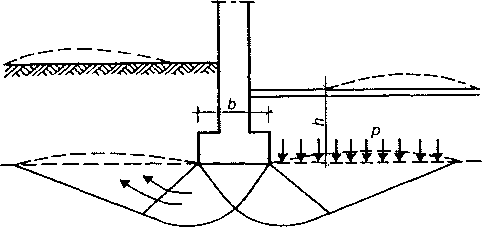 Istotnymi właściwościami gruntów, ograniczającymi nacisk jednostkowy na nie, są*-ściśliwość i wytrzymałość na ścinanie. Ściśliwość gruntu wpływa na wartość tzw. osiadania, które z różnych względów bywa ograniczane. Przekroczenie wytrzymałości gruntu na ścinanie powoduje powstanie w gruncie powierzchni poślizgu i wypieranie gruntu spod fundamentu, czego wynikiem może być duże i gwałtowne przemieszczenie konstrukcji.
Istotnymi właściwościami gruntów, ograniczającymi nacisk jednostkowy na nie, są*-ściśliwość i wytrzymałość na ścinanie. Ściśliwość gruntu wpływa na wartość tzw. osiadania, które z różnych względów bywa ograniczane. Przekroczenie wytrzymałości gruntu na ścinanie powoduje powstanie w gruncie powierzchni poślizgu i wypieranie gruntu spod fundamentu, czego wynikiem może być duże i gwałtowne przemieszczenie konstrukcji.
Według PN-81/B-03020 głębokość posadowienia ze względu na przemarzanie gruntów przyjmuje się w granicach 80-120 cm. Fundamenty wewnątrz budynku, gdzie grunt jest zabezpieczony od zamarzania, mogą być posadowione wyżej pod warunkiem, że w okresie wykonywania budynku grunt również będzie zabezpieczony od zamarzania.
